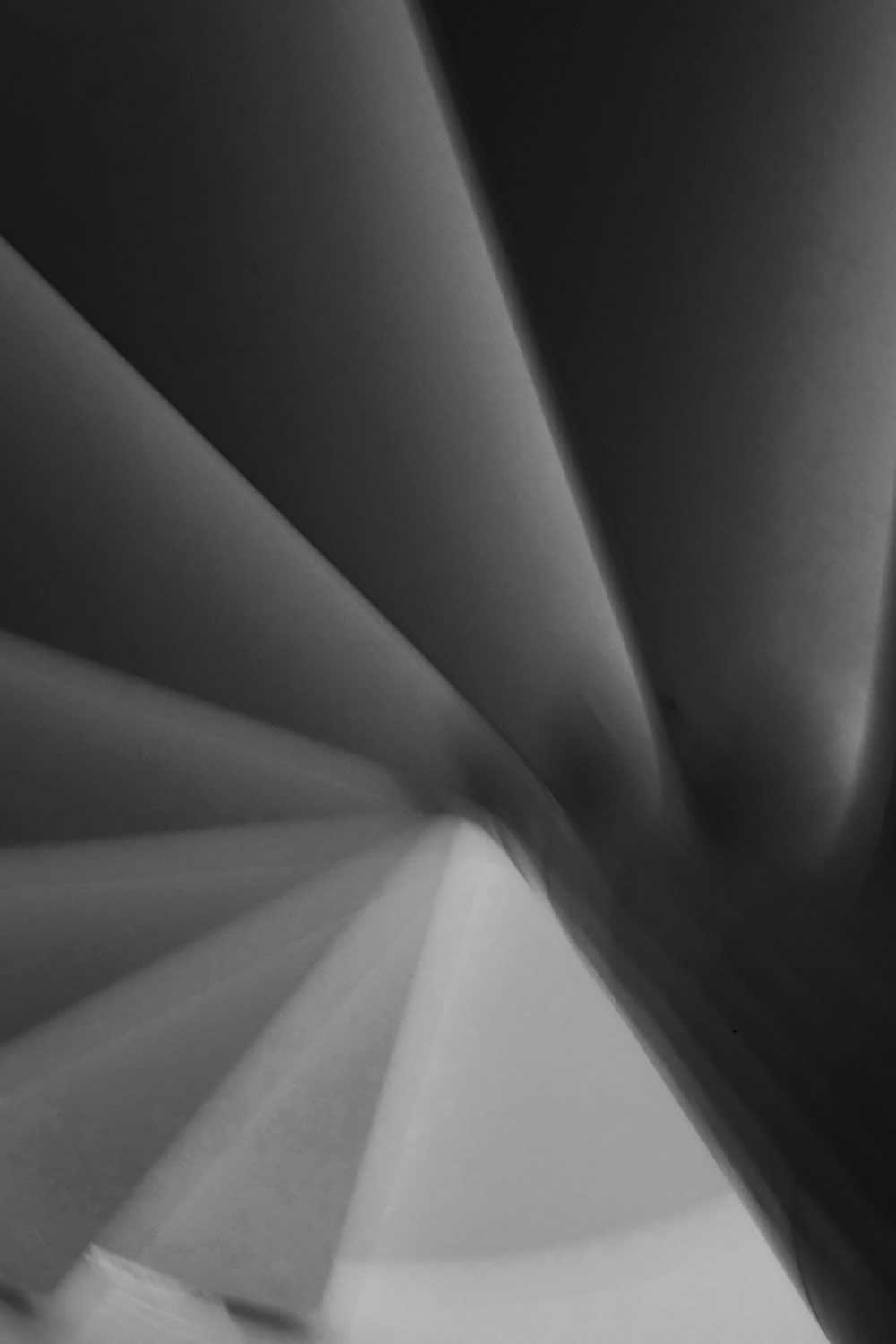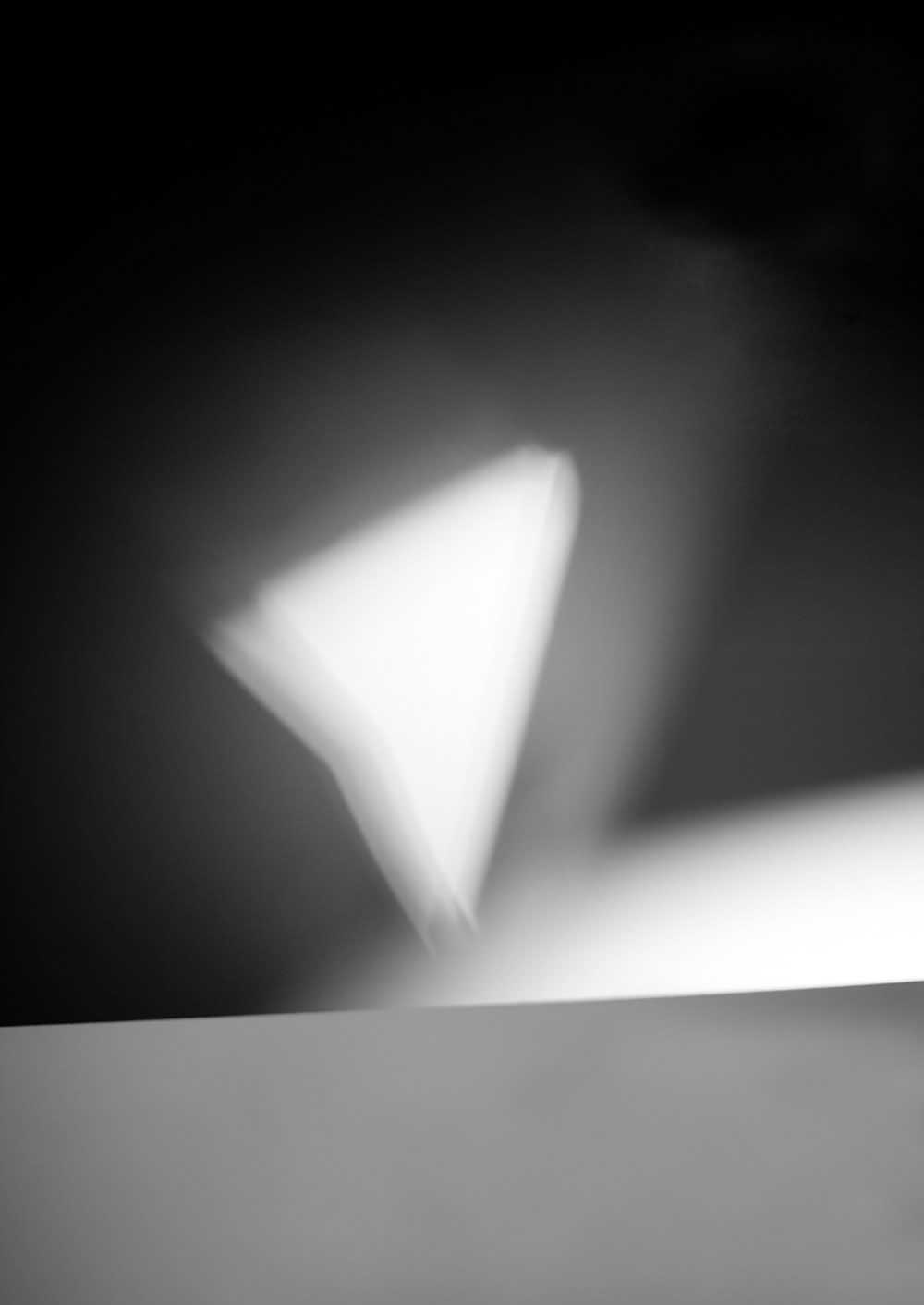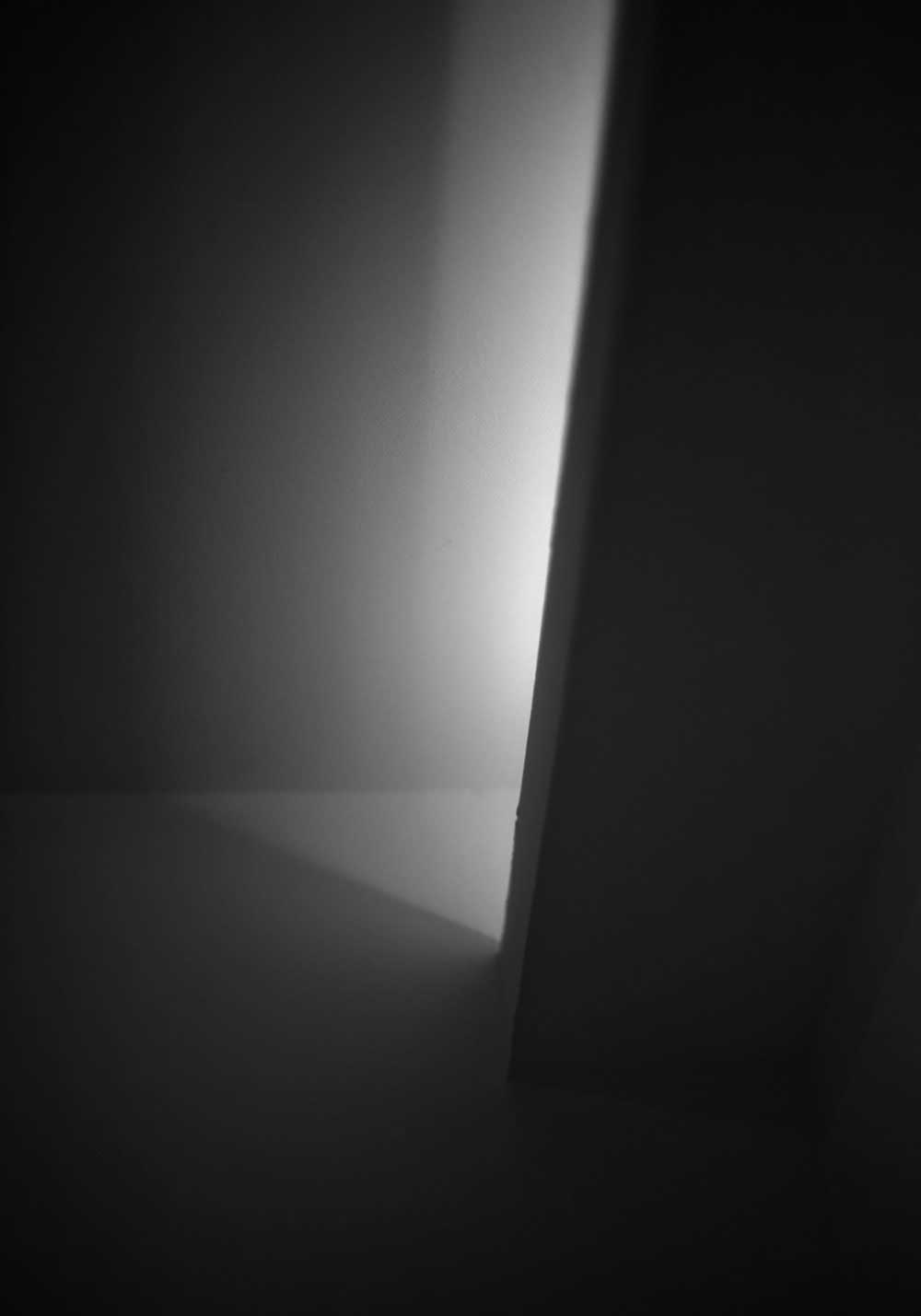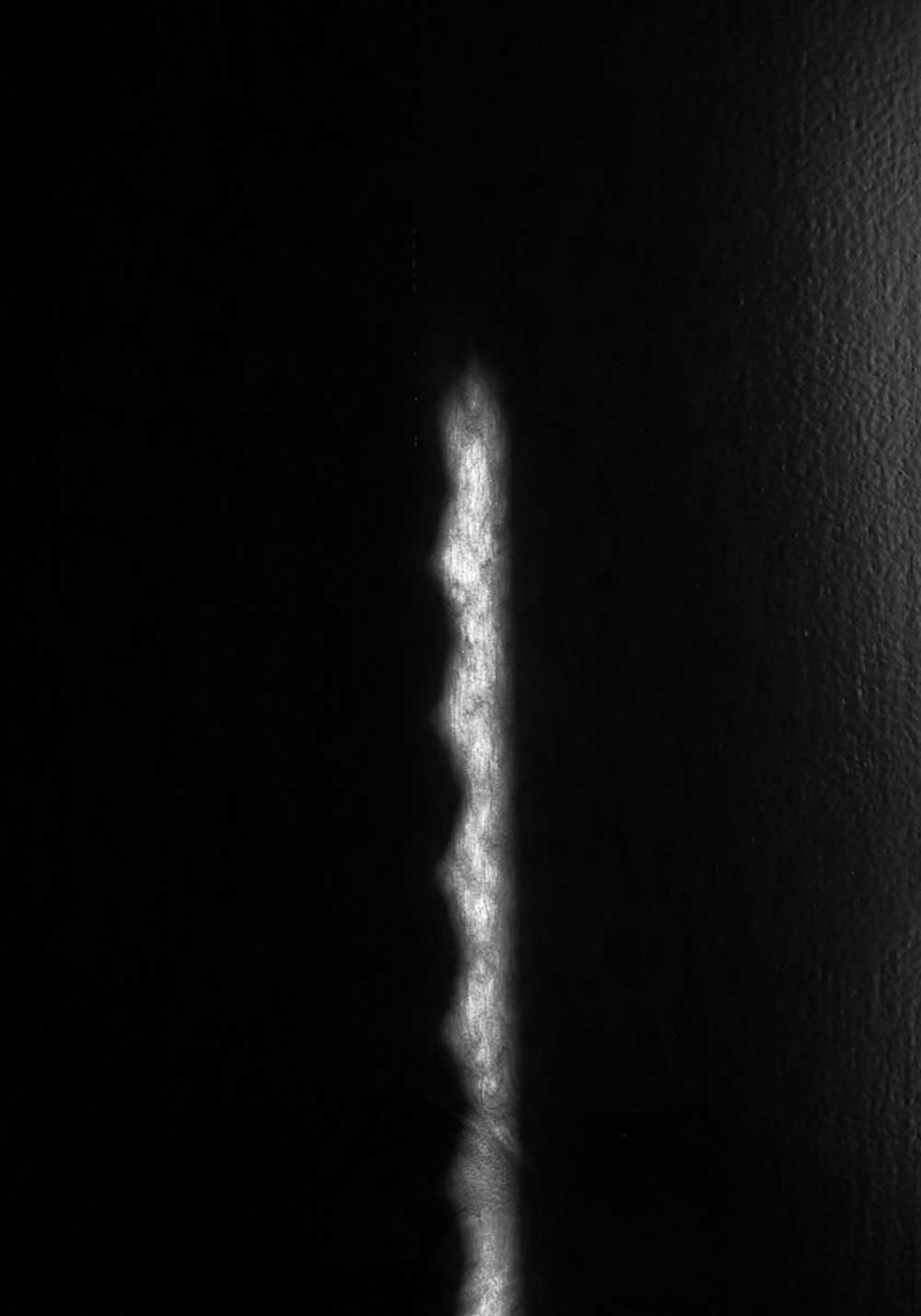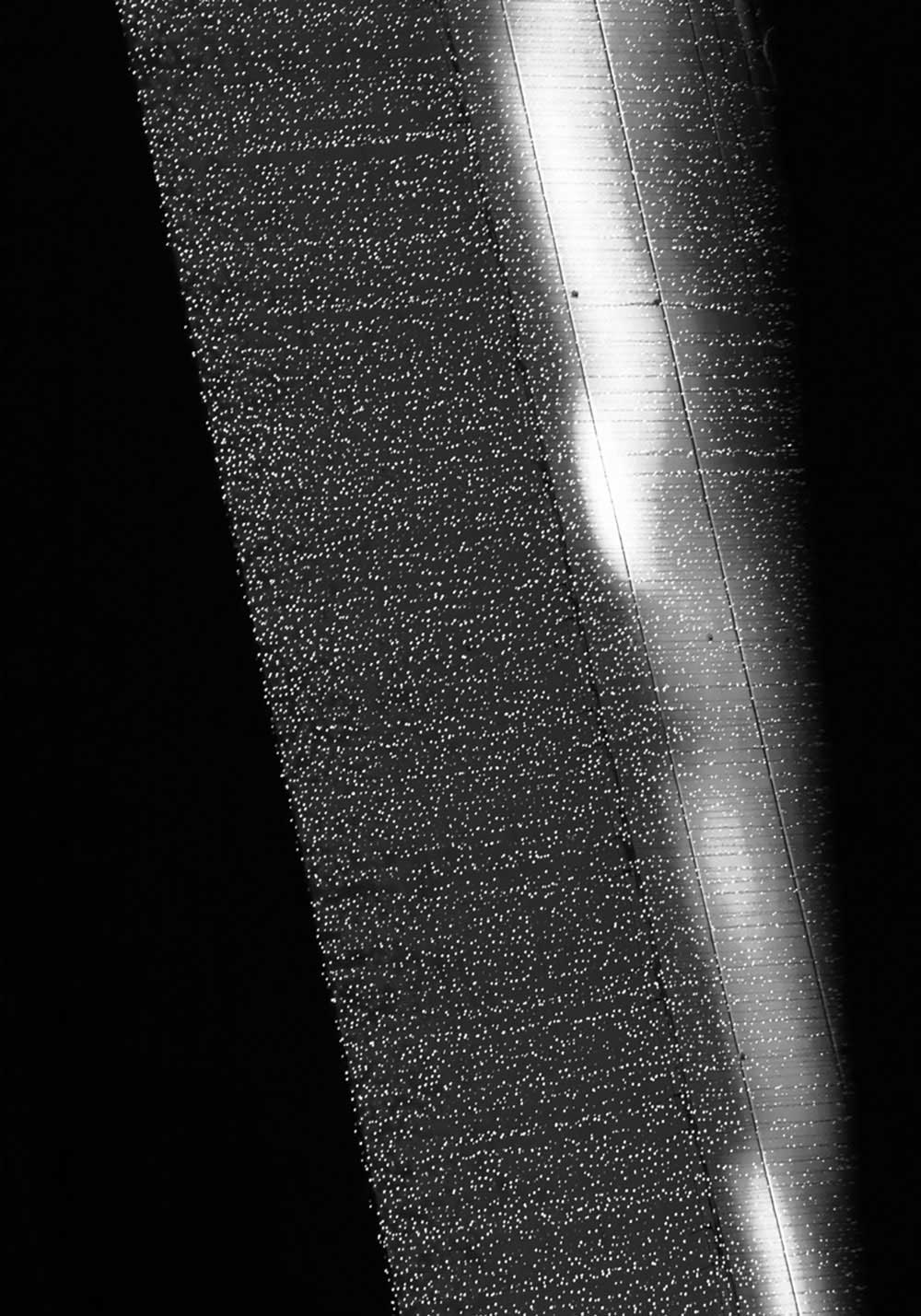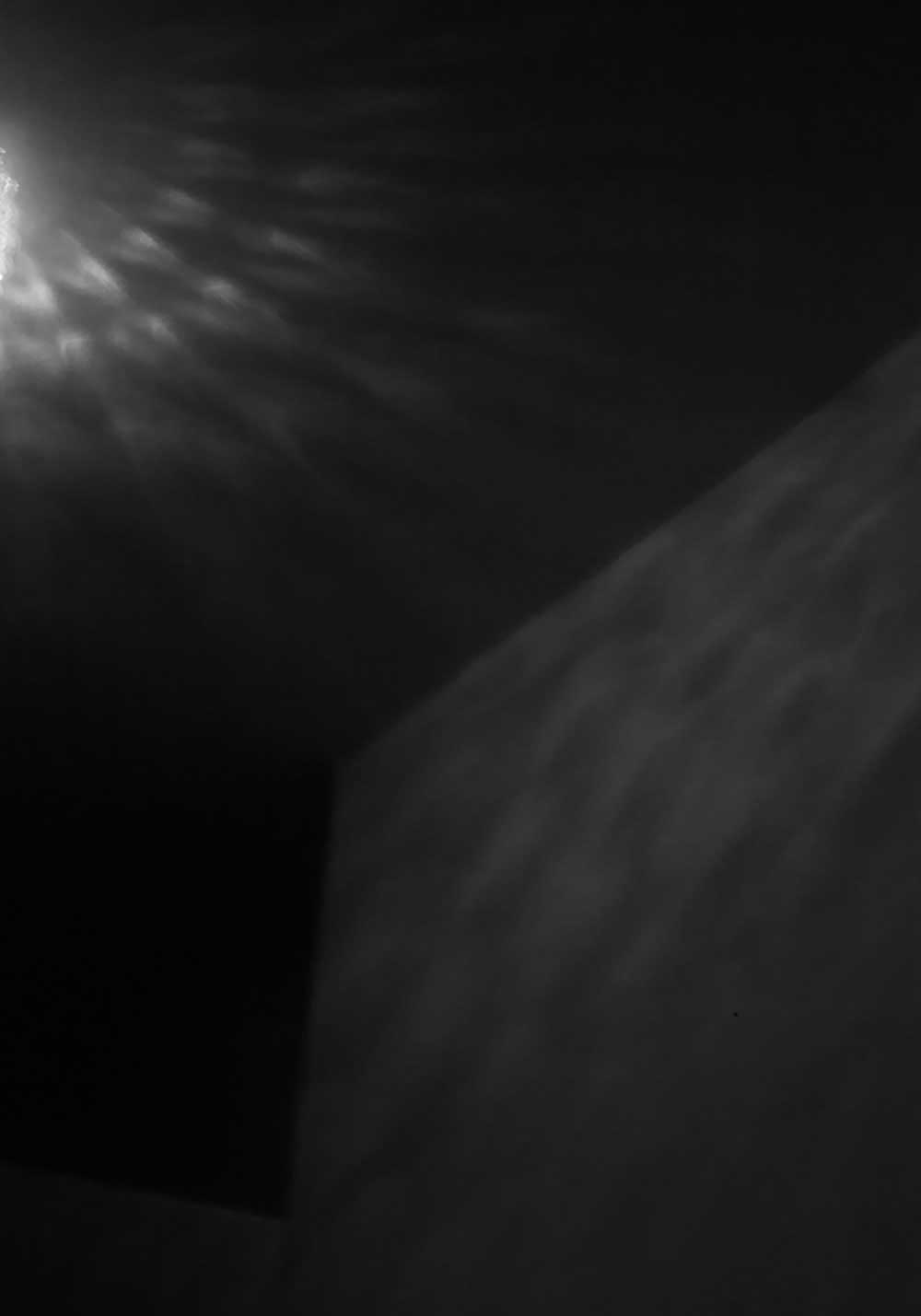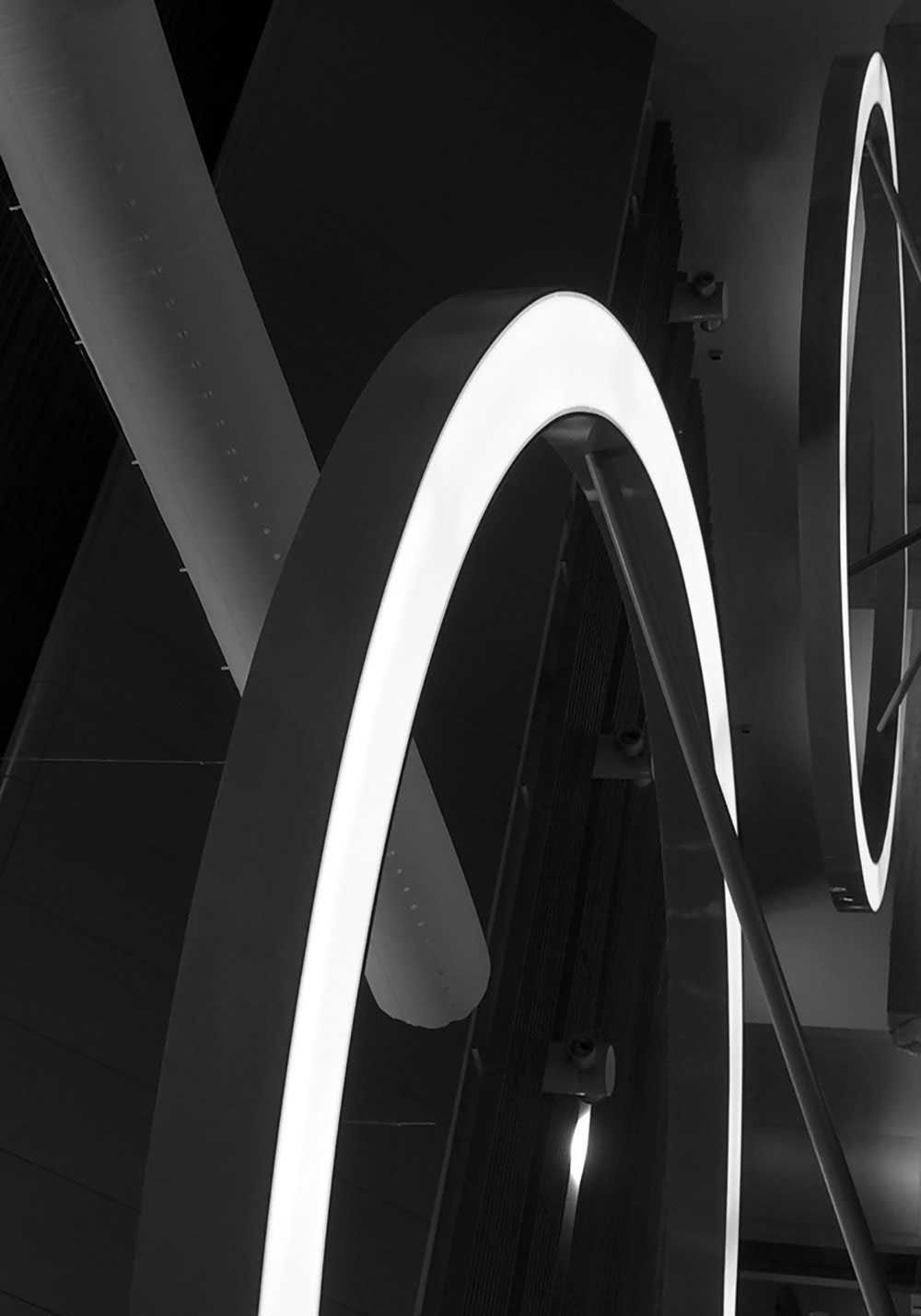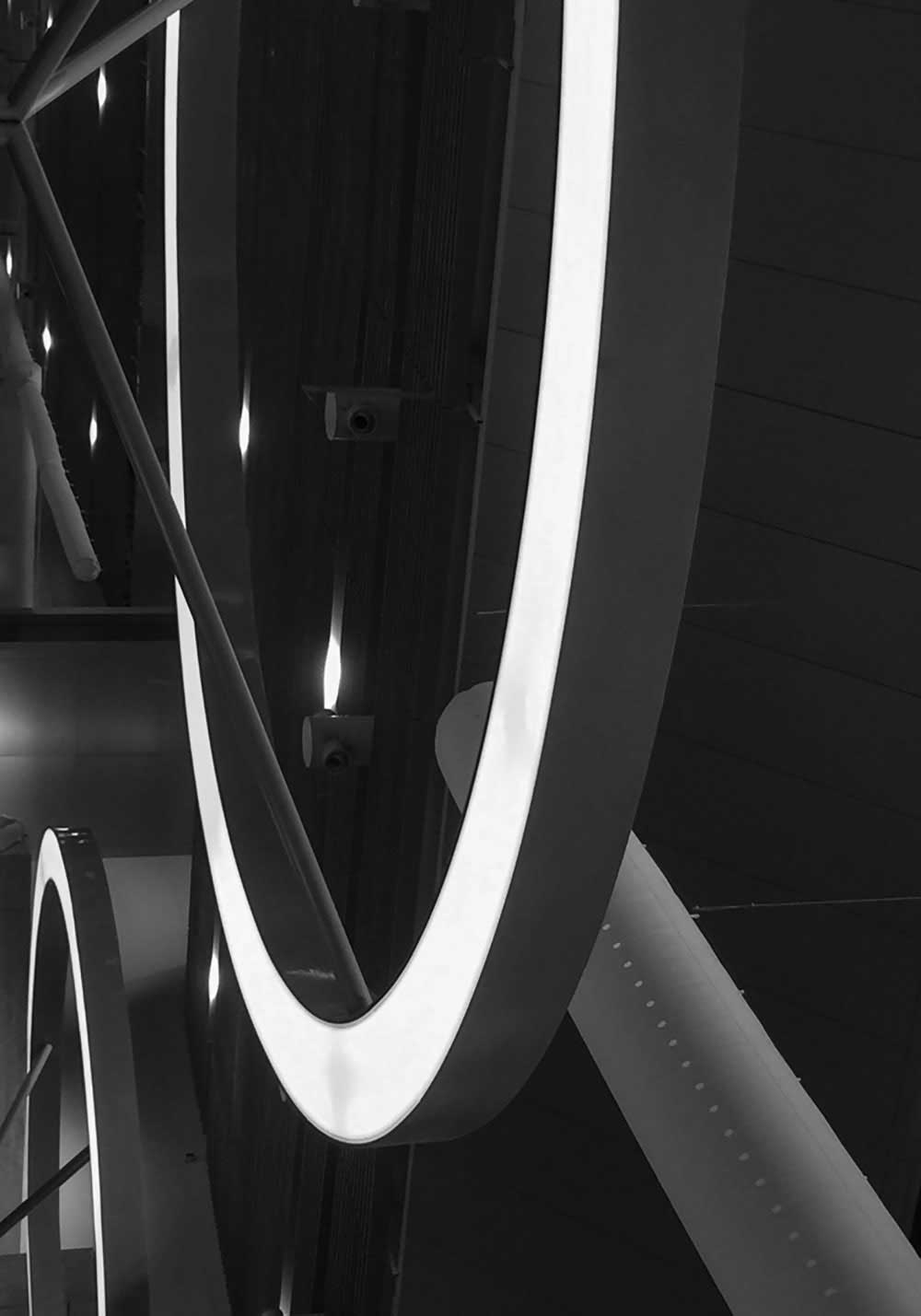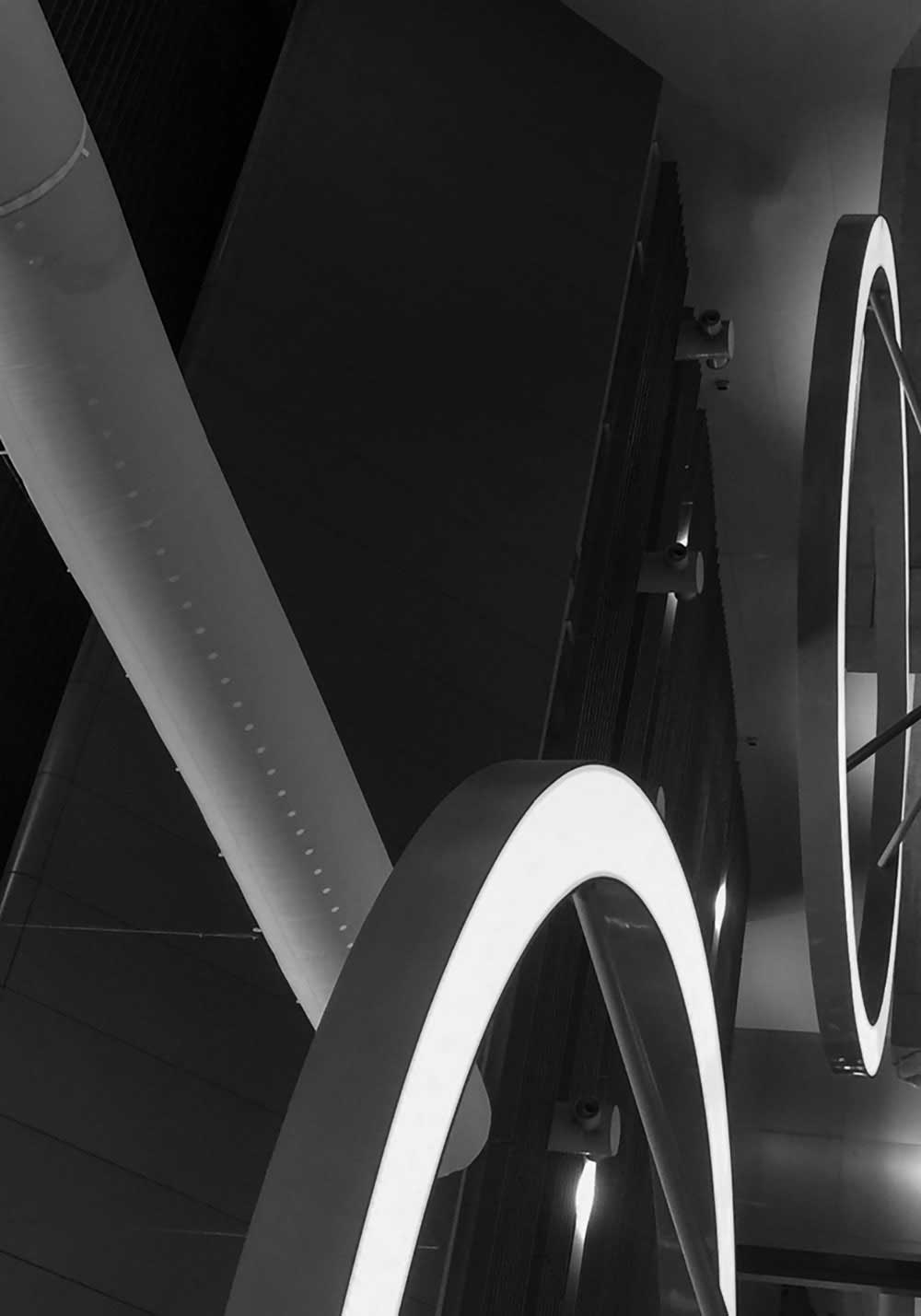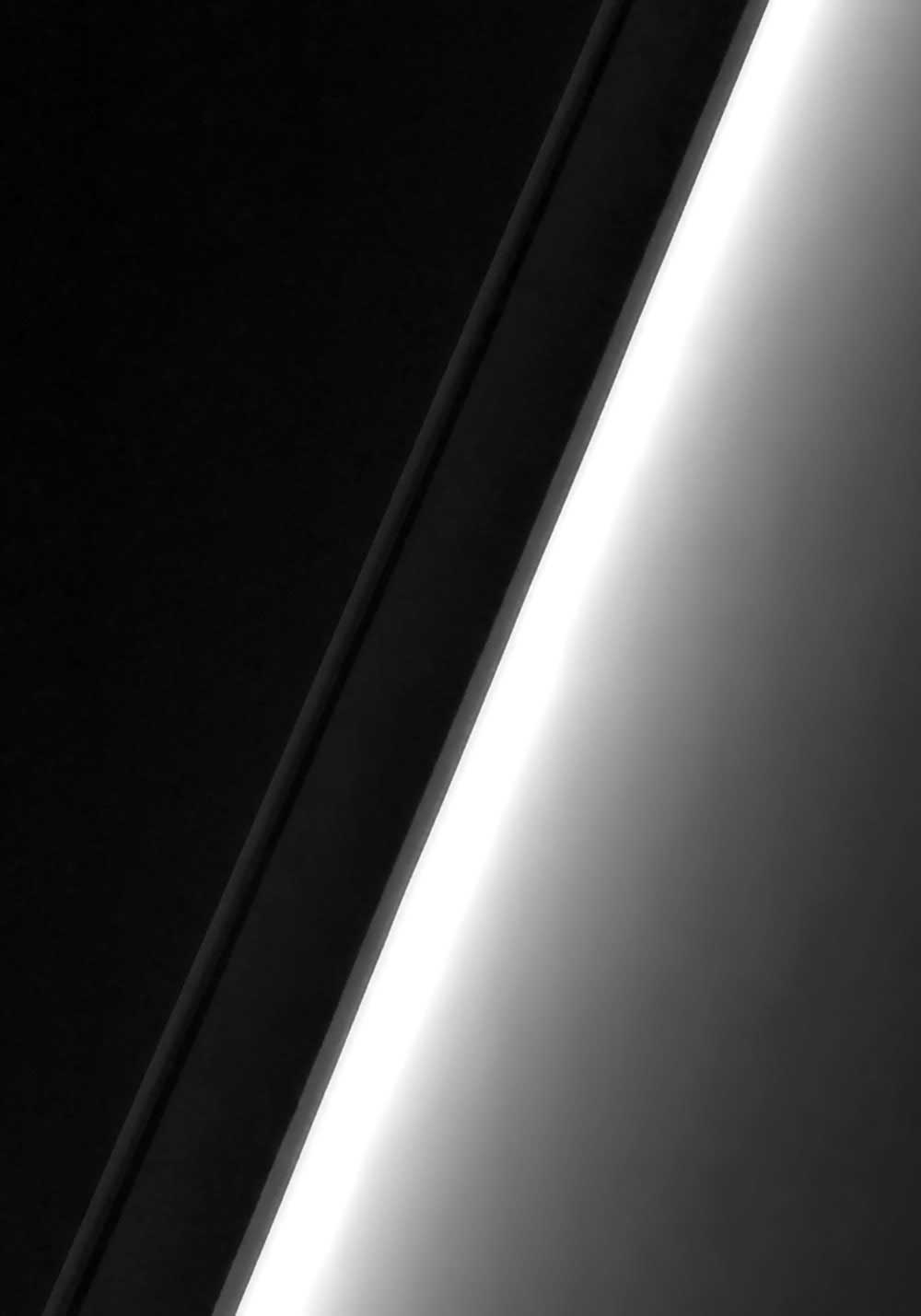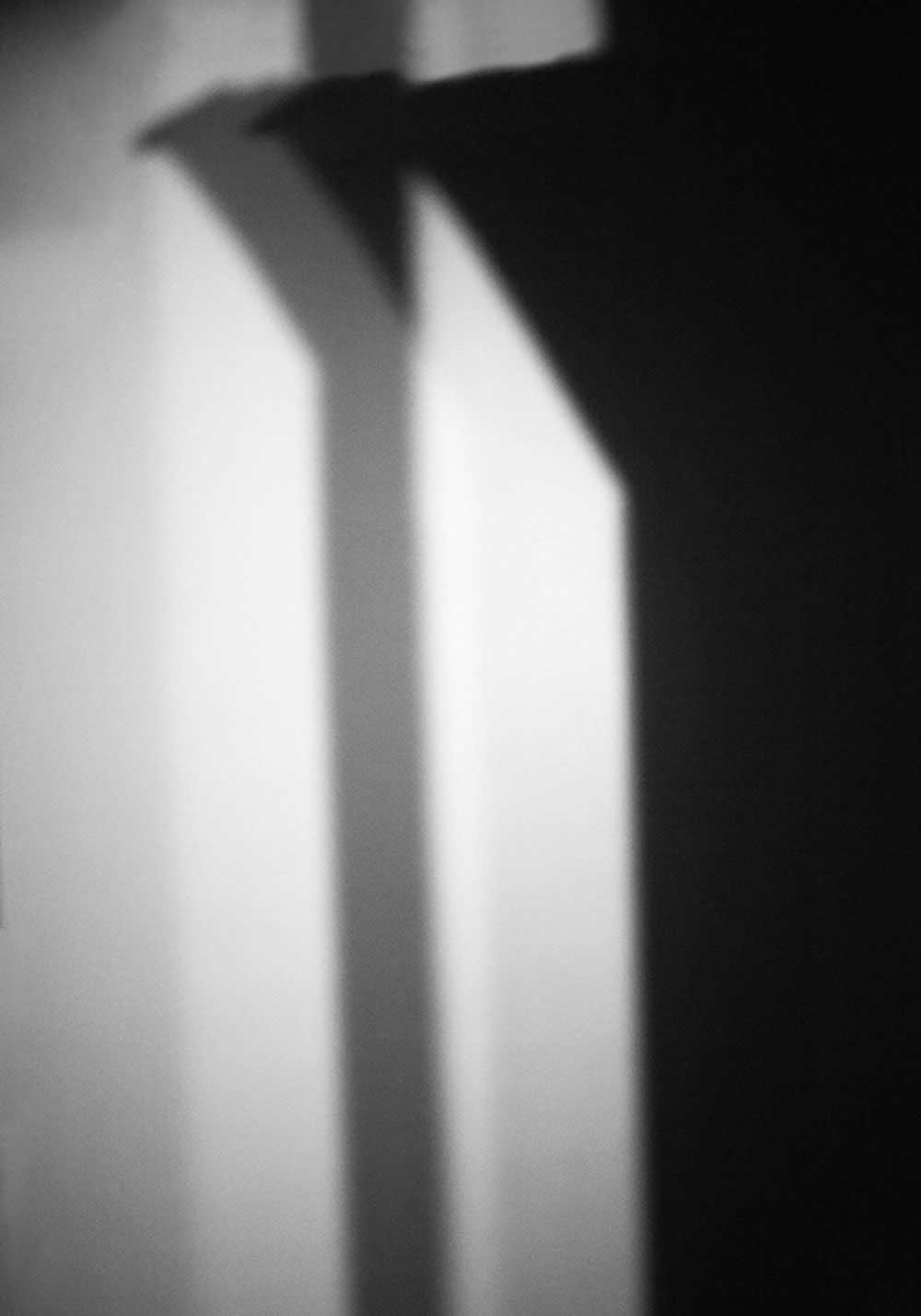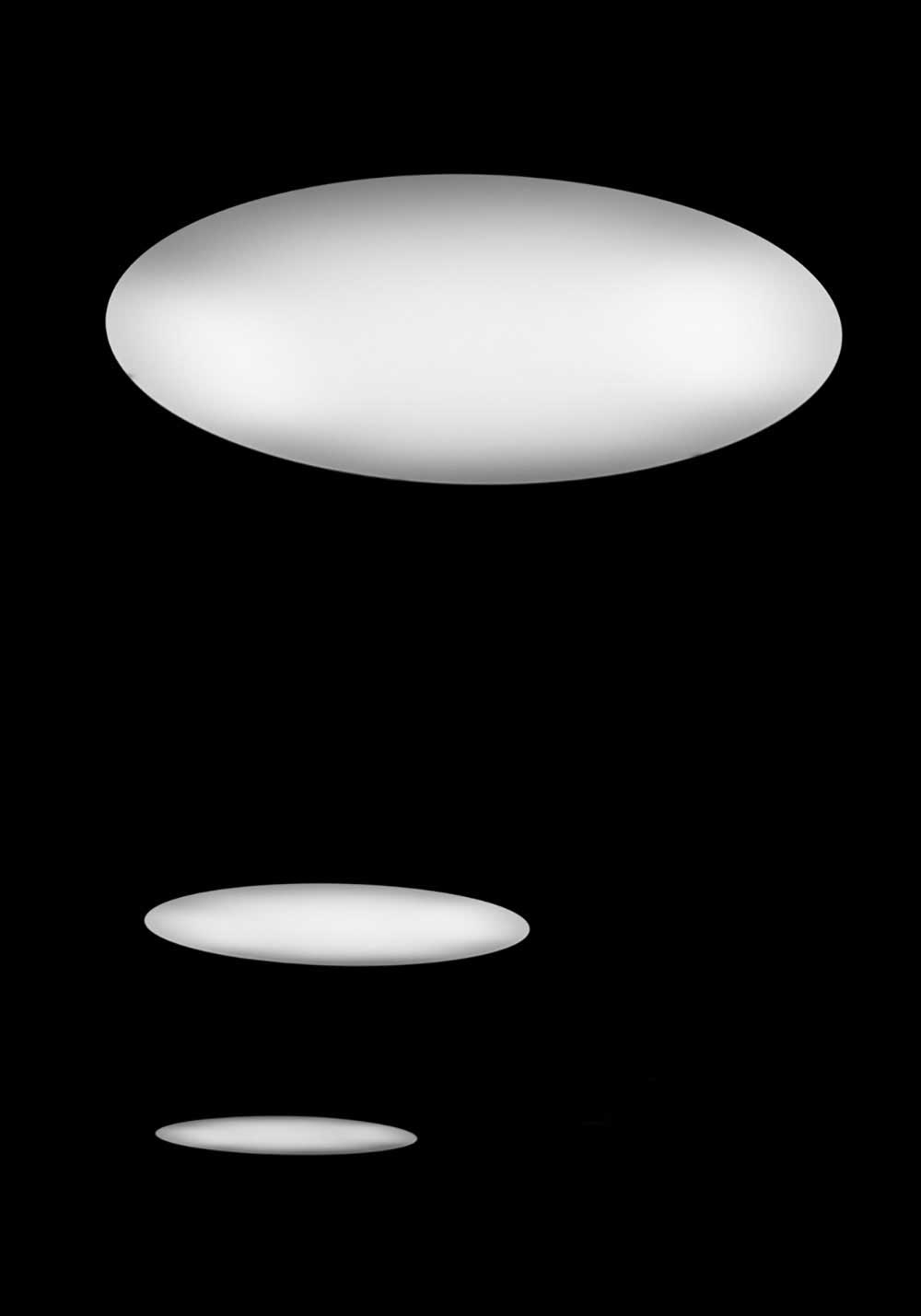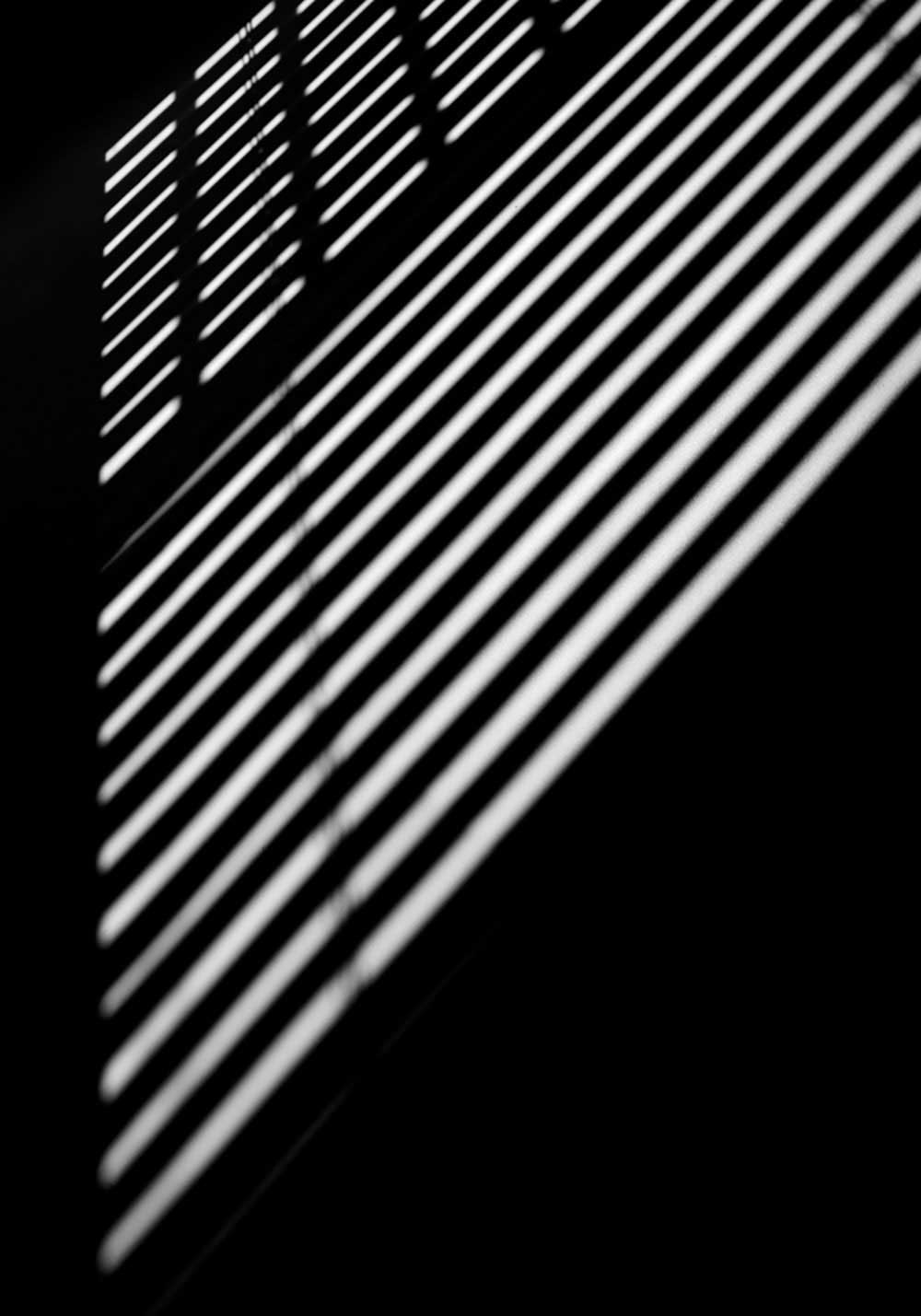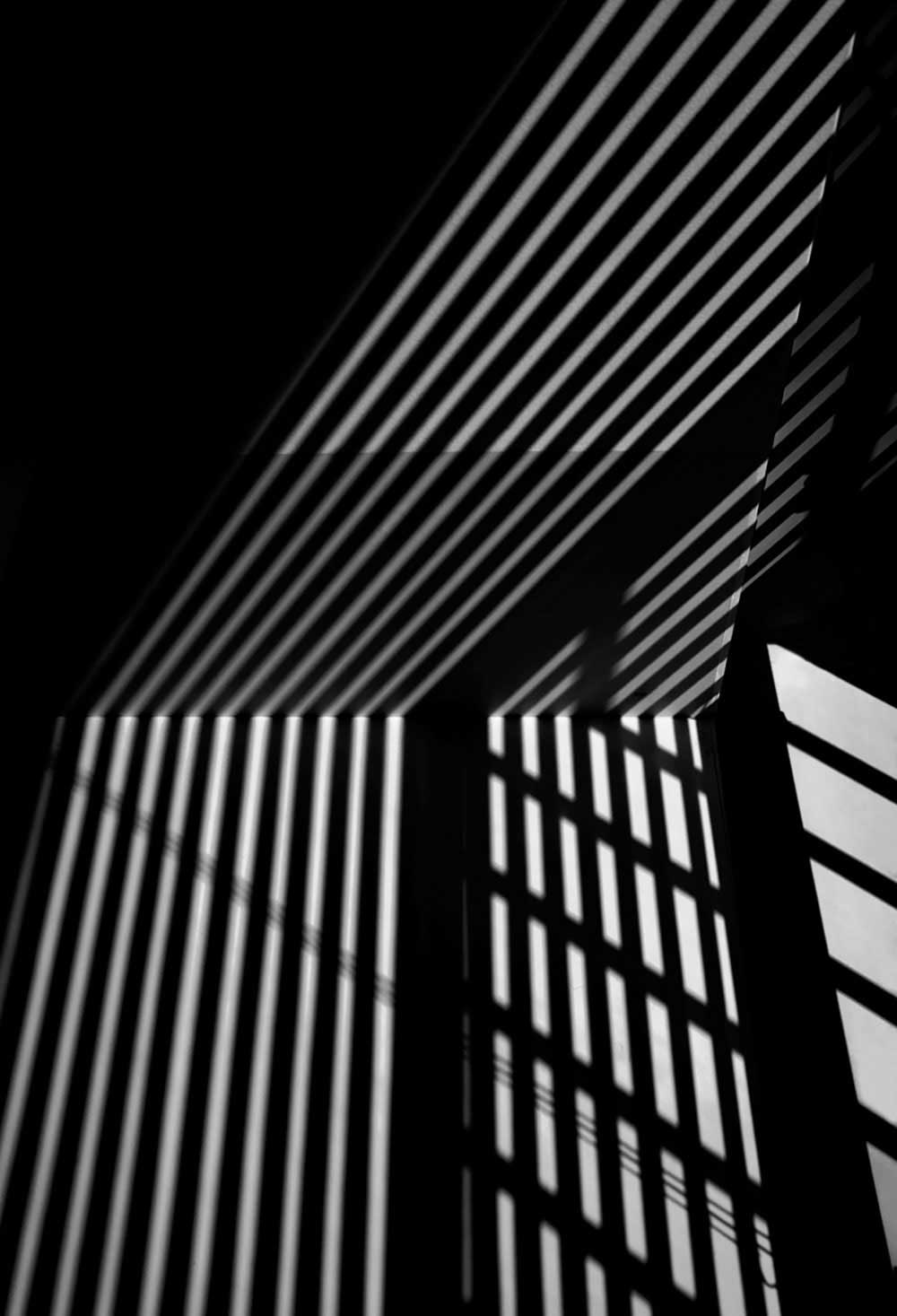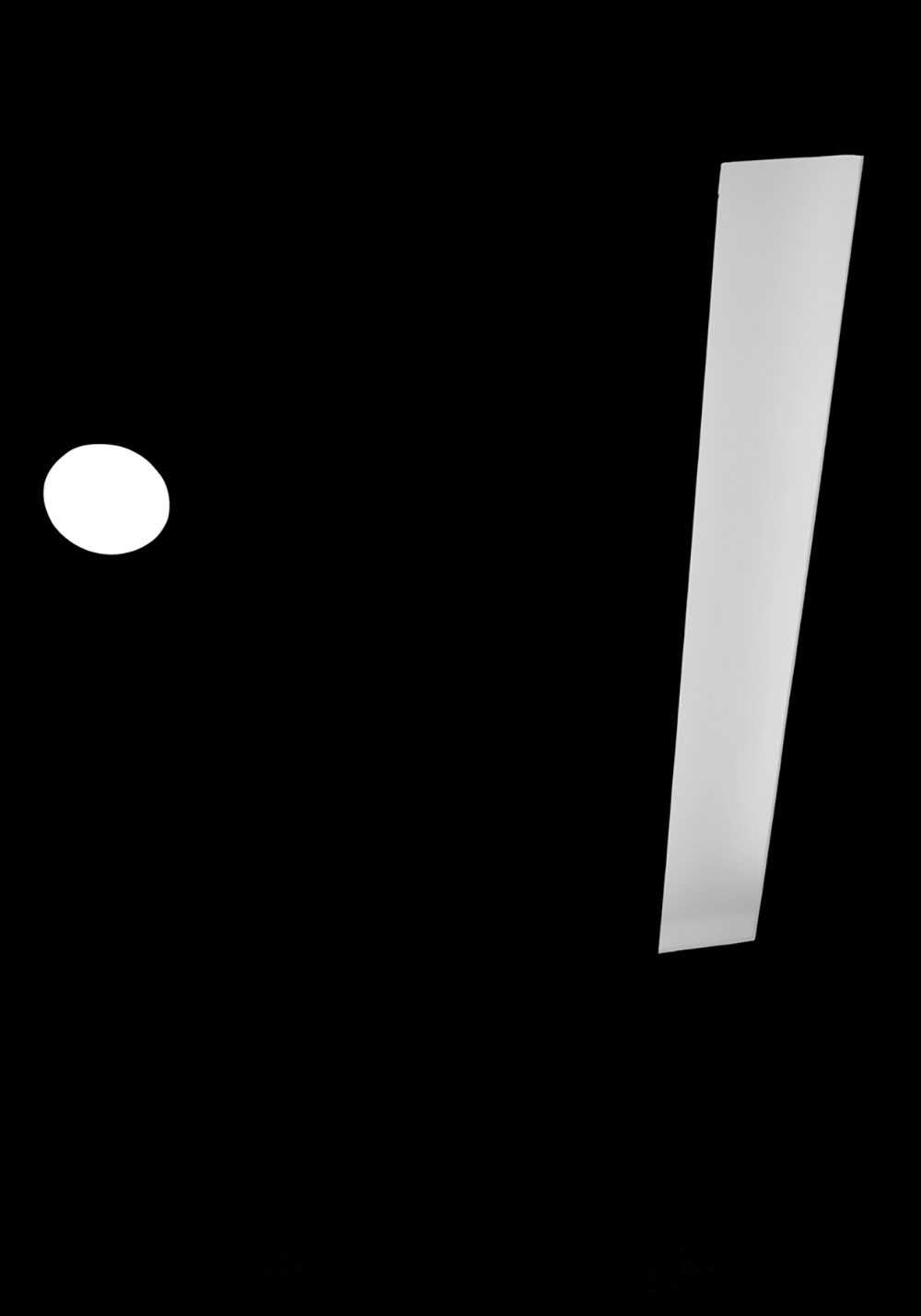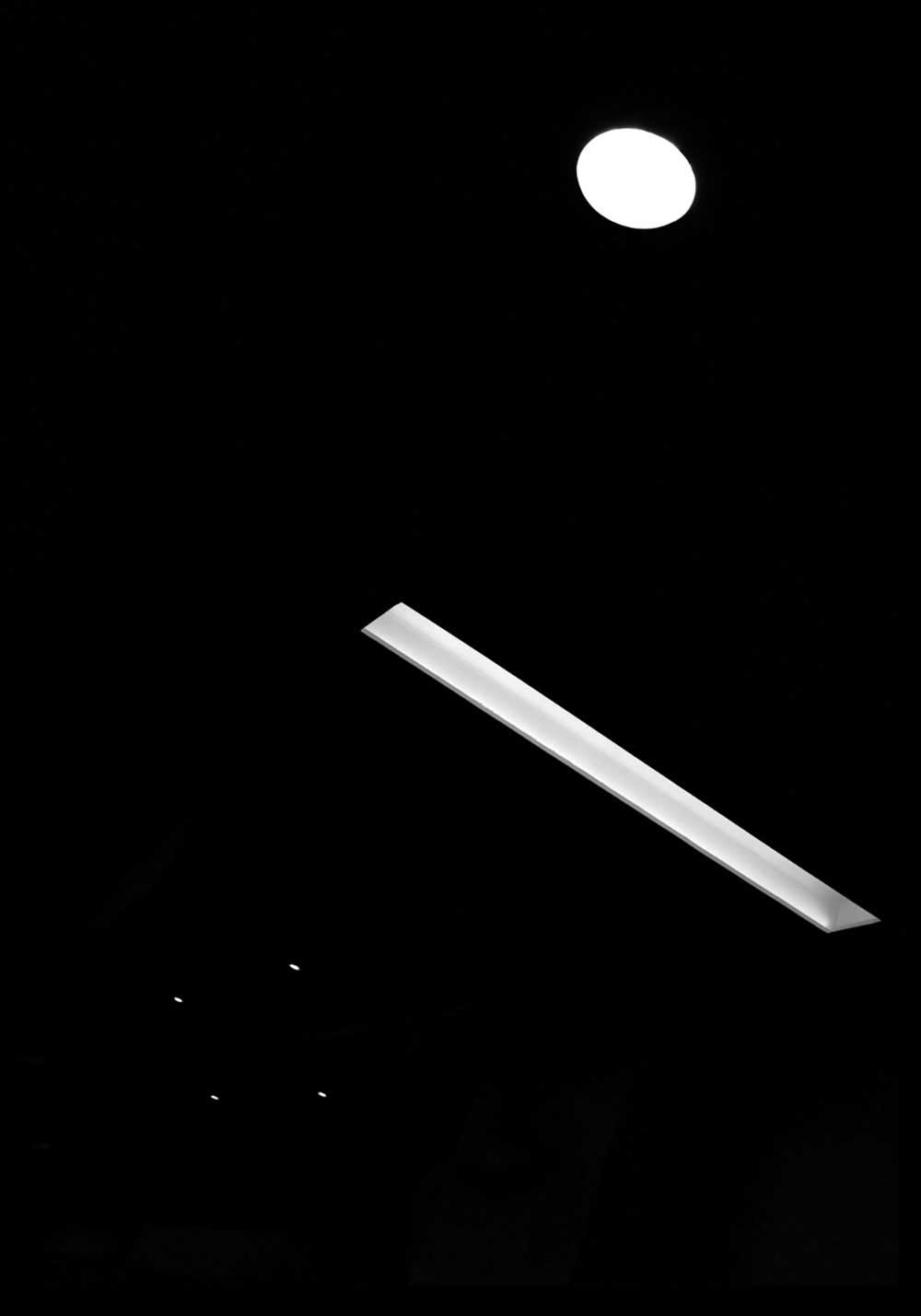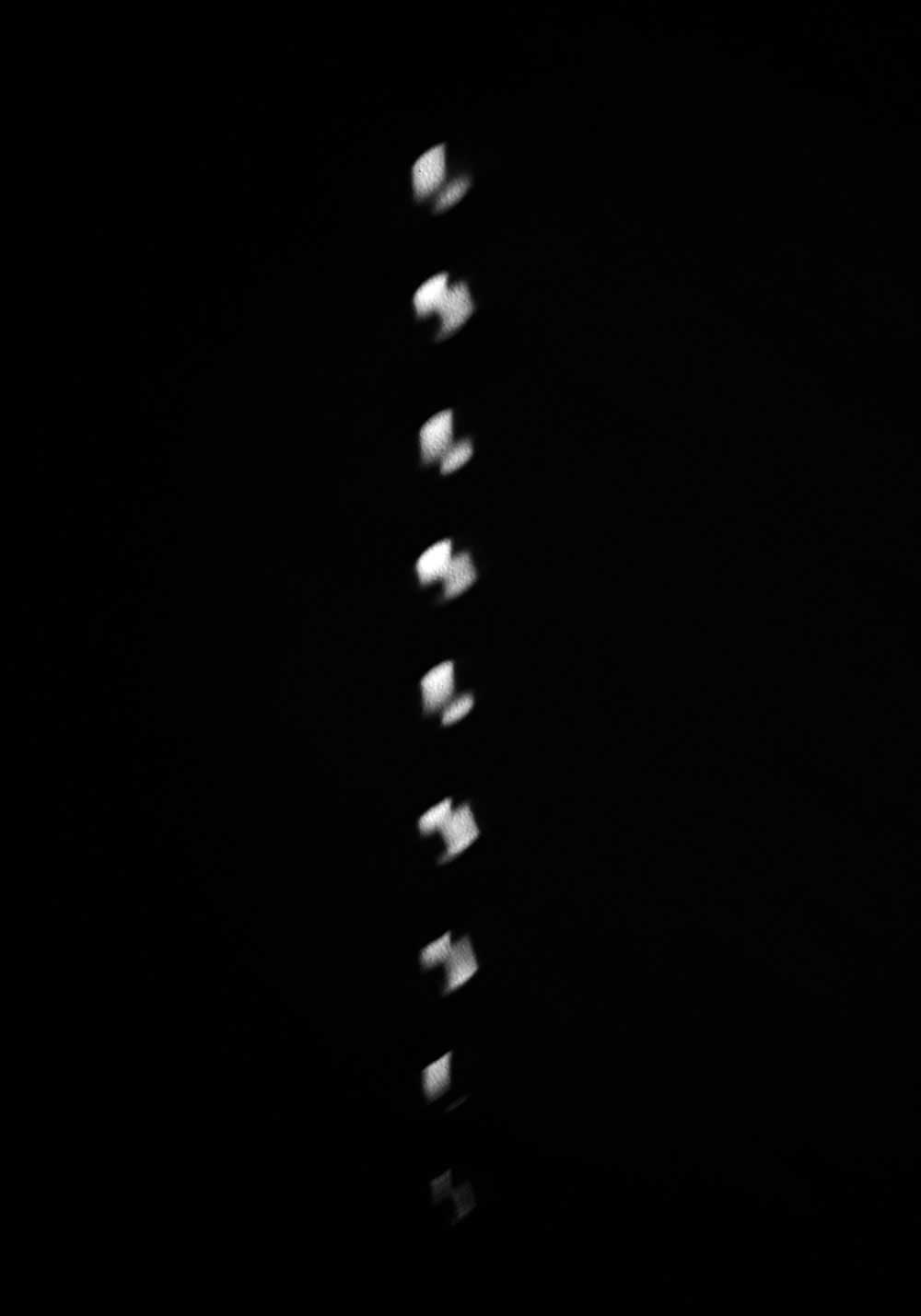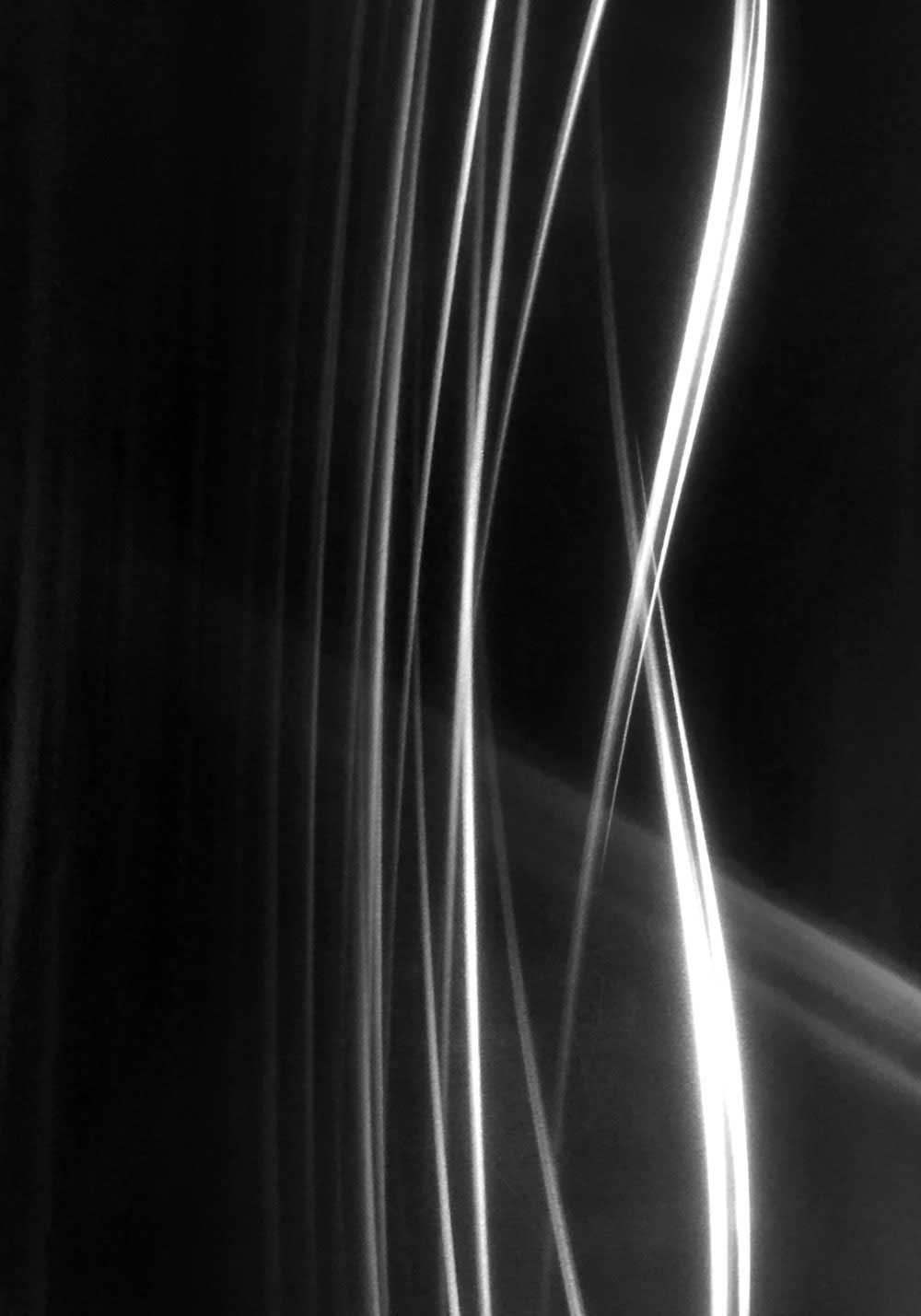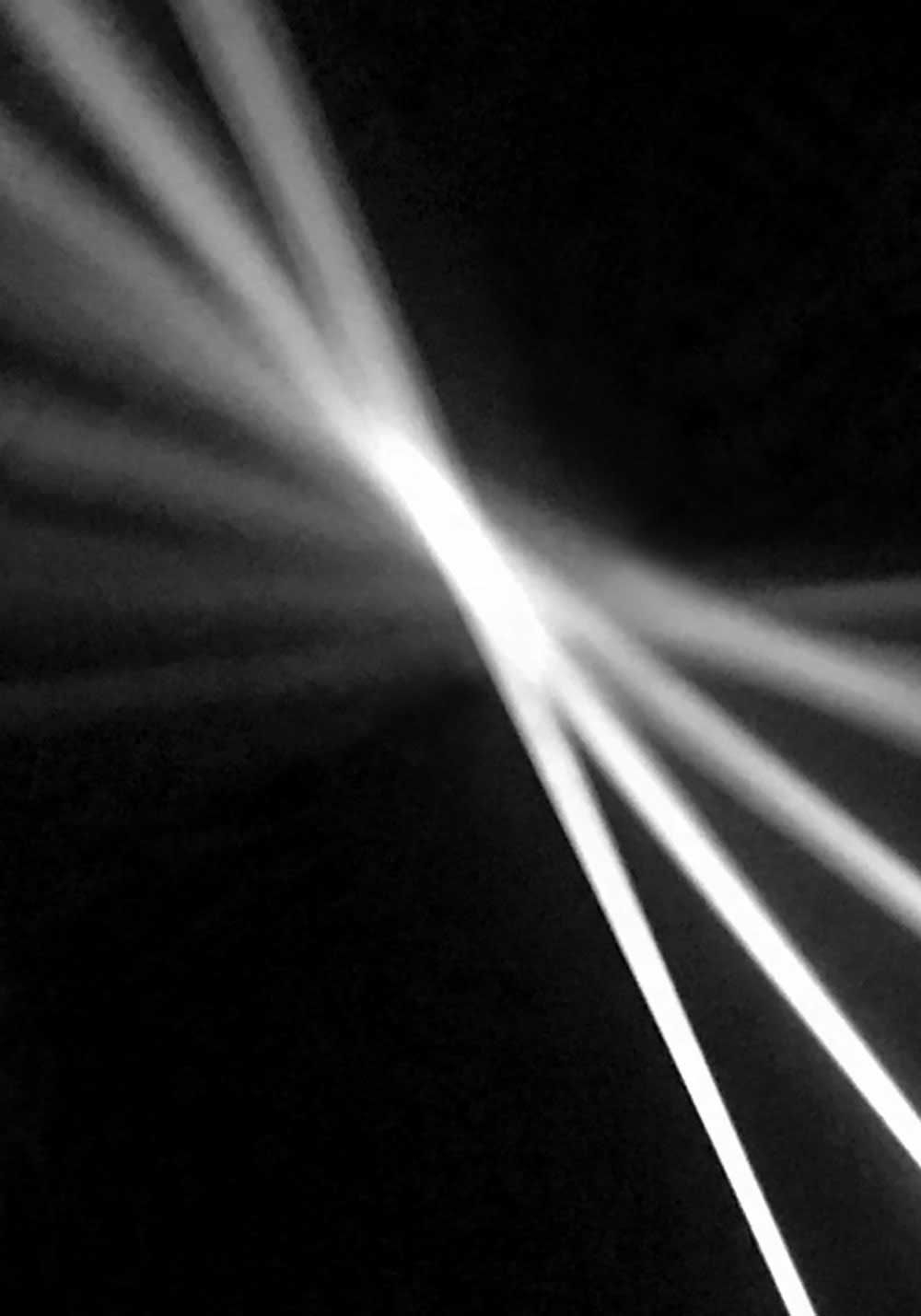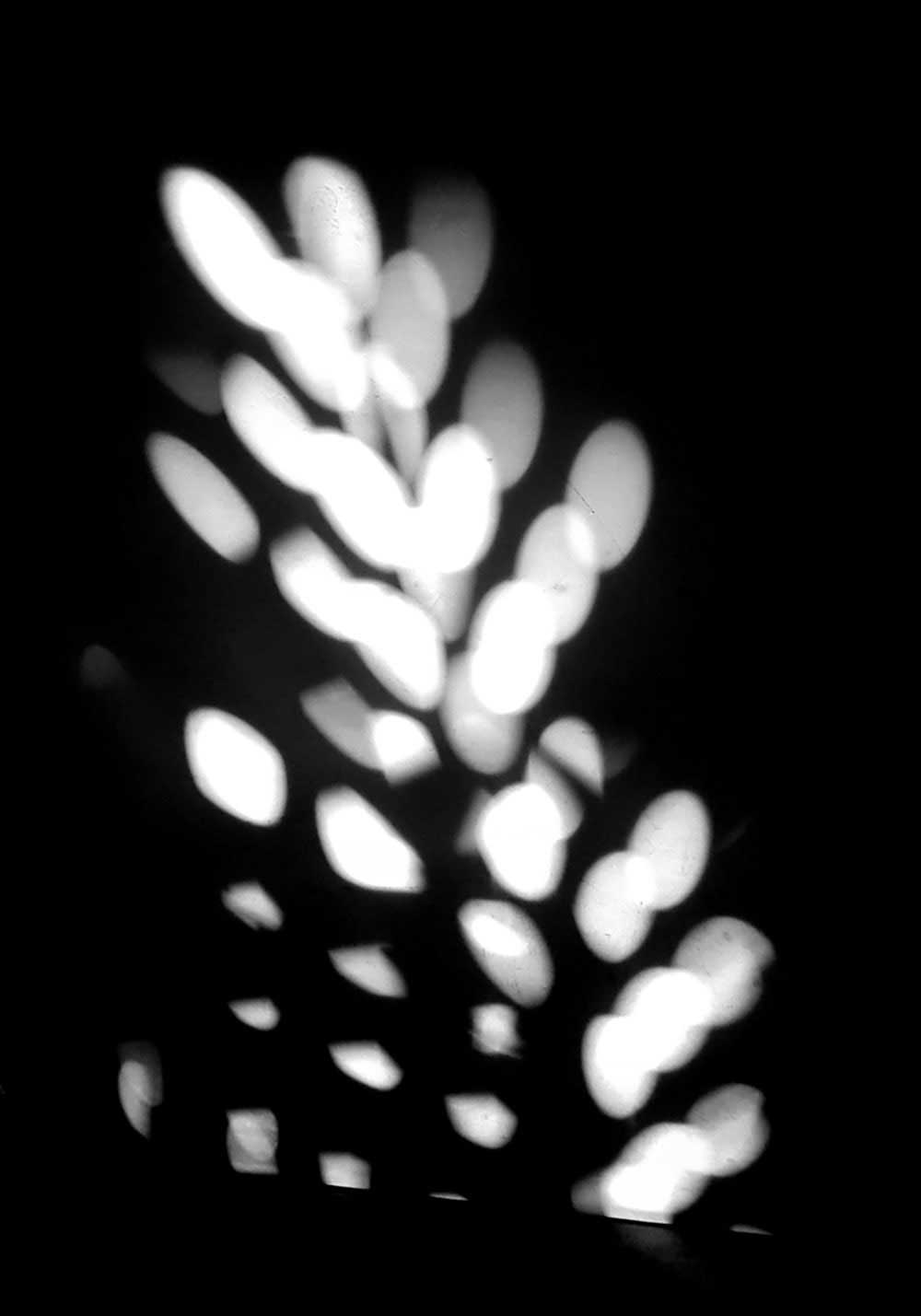Everything that I think and desire has the single aim of thinking about the unifying these fragments, these enigmas and these frightful randomnesses. How would I support my own humanity if man were not at the same time a poet, a decoder of enigmas and redeemer of randomness?
Friedrich Nietzsche, Thus Spoke Zarathustra
The dawn. A rarefied, lazy beam of light comes streaming through the visors provided by the architectural design. The darkness of the interior subtly fades in intensity and stained by gray tones.
The morning bursts forth. In an instant, there is light. And from the light the drawing is born. Volumes are configured. Light rays are cast horizontally, choreographing shadows. At each new twilight, at each orbit, the stars encircle the planet Earth and continue inscribing their paths. Antonio Florence’s eyes preserve the startlement and awe of perceiving these errantic lines, never letting go of the extraordinary spectacle of the eternal rebeginning of the days which turns each new morning into an ordinary event due to its cyclic occurrence. It is up to the poet not to allow himself to be led away by the repetition oh the phenomena. Because, even though the scientists strive to explain the laws that rule the universe, there is always an untouched parcel of unnamable mystery – an undeniably diverse landscape of the world which is plural and magic at each new appearance.
Intervalos Acidentais is essentially a book of contemplation. Abstaining from the deciphering of the enigmas of astrophysics, the photographer chooses to collect and encapsulate in his camera the glimmering of the stars, the ravishing appeal of the moon, the searing brightness of the sun`s rays and also the enchantment of the artificial lights, which men construct believing in the creative power of their own “Milk Way”. As mysterious and inapprehensible as the forces that command the orbits of the heavenly bodies is the predestination that seems to accompany certain family lineages. Antonio Florence, the hunter of the light is the great-great-great grandson of Hercule Florence1 (1804-1879), one of the five official inventors of photography, who succeeded independently, in Brazil, in capturing light rays on a surface treated with silver nitrate. It is fascinating – or is it due to some (un)known supernatural power? – that 184 years later, precisely for the sake of poetic practice, one of his descendents has captured portions of light in his photographic compositions. Photography, or “light-writing”, arises for Antonio as a possibility of creating drawings on a given surface.
Not giving in to easy artifices, his work is constructed based on a lingering, unhurried gaze, capturing the effects of light on a corner, an object, a plane. Perceiving these occurrences implies entering into the same rhythm, into the same pulsation of the universe. It means aligning one’s perception with the flow time, with the appreciation of the cosmos. It is a process that leads the photographer to naturally evade himself to enter into harmony with the meditative elements. Infinite compositions between the drawings of light and the black background given to randomness. Clashing between light and shadow and the detailed observation surprise and seduce the artist’s creative imagination. An unceasing movement from which life bursts forth in immeasurable states of internalized euphoria. Secrets of humanity echoed in great mysteries that surround the vital cycles. A stealthy invasion into the household space with a sorcery of codes and lines that stimulate the perception for the sacred enchantments of life. The redemption of randomness, as Nietzsche suggest. A latent throbbing of the world translate into silver and light, as shown to us by generations of the Florence lineage. [Text by Eder Chiodetto]
About Antonio Florence
Great, great grandson of Hercule Florence (1804-1879), one of the five official inventors of photography, who managed all alone in Brazil to capture light rays on a silver surface and fix it. In 2001, he began to study the life and work of his great-great-grandfather, founding the Hercule Florence Institute in 2007.
In August 2015, he decided to confront and understand the process of this artistic expression in a professional photography course in São Paulo – Brazil. In a workshop organized by the Leica gallery, he discovered his gaze through the comments of photographer Ralph Gibson to two of his photographs, and began to enclose his portions of light in abstract compositions.Since then Antonio has started to understand photography or the writing of light, as a form of expression. His first essay appears in Intervalos Acidentais, the author’s book and exhibited (11-2017), edited by Fotô Editorial, curated by Eder Chiodetto.



